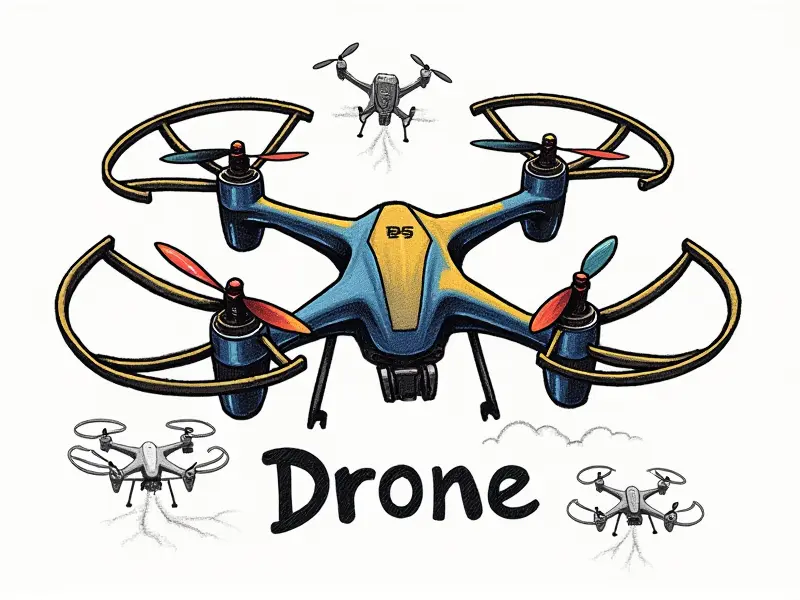Can drones help fix power lines?

Drones Fixing Power Lines: The Future?
In recent years, the use of drones in various industries has surged due to their versatility and efficiency. One area where drones are making a significant impact is power line maintenance and repair. As utilities face increasing challenges with aging infrastructure and harsh environmental conditions, the integration of drone technology offers promising solutions for maintaining reliable electricity supply.
Revolutionizing Power Line Inspection with Drones
The traditional method of inspecting power lines involves sending human workers to climb poles or use helicopters, both of which are costly and time-consuming. Drones equipped with high-resolution cameras and thermal imaging can perform these inspections more efficiently and safely. They provide real-time data on the condition of power lines, identifying potential issues before they become critical.
Drone Technology for Efficient Power Line Work
Drones are not just about inspection; they also play a crucial role in repairing damaged or deteriorated sections of power lines. Equipped with specialized tools and sensors, drones can perform tasks such as tightening bolts, replacing insulators, and even welding minor repairs. This reduces the need for extensive ground-based maintenance teams and minimizes downtime.
Using Drones to Safeguard Power Lines
The ability of drones to operate in remote or hazardous areas makes them invaluable for safeguarding power lines against natural disasters like hurricanes, wildfires, and ice storms. Post-disaster assessments can be conducted swiftly, allowing utilities to restore service faster and more effectively.
Can Drones Safely Fix High Voltage Power Lines?
A common concern is the safety of using drones near high voltage power lines. Modern drone technology includes advanced insulation materials and shielding that protect both the equipment and operators from electrical hazards. Additionally, drones can be programmed to maintain safe distances from live wires, ensuring operational safety.
The Role of Drones in Maintaining Grids
Grid maintenance is a critical aspect of power distribution, and drones are proving instrumental in this regard. By providing detailed aerial views and data analytics, drones help utilities identify weak points in the grid system, enabling proactive measures to prevent outages.
Drones Speed Up Power Line Inspections
One of the most significant advantages of using drones for power line inspections is their speed. Drones can cover vast areas quickly and provide instant feedback through live video feeds or stored data. This rapid assessment capability allows utilities to address issues promptly, reducing the risk of prolonged outages.
Smart Solutions: Drones and Power Lines
- Data Collection: Drones equipped with LiDAR technology can create detailed 3D maps of power line infrastructure, aiding in planning and maintenance efforts.
- Real-Time Monitoring: Continuous monitoring through drones ensures that any changes or anomalies are detected immediately, allowing for timely interventions.
Efficiently Repairing Power Lines with Drones
The repair process using drones is not only faster but also more cost-effective. By reducing the need for extensive ground crews and specialized equipment, utilities can allocate resources more efficiently. This approach enhances overall operational efficiency while maintaining high standards of service.
Drone Technology for Quick Power Line Fixes
- Automated Repairs: Some advanced drones are capable of performing automated repairs using onboard tools and robotic arms, further minimizing human intervention.
- Remote Control Operations: Operators can control drones from a safe distance, ensuring that delicate tasks are performed with precision and care.
Using Drones to Fix Grid Issues
The integration of drone technology into grid management is transforming how utilities operate. By leveraging the capabilities of drones, companies can enhance their ability to respond to emergencies, conduct routine maintenance, and improve overall system reliability.
Conclusion
Drones are undeniably revolutionizing the way power lines are inspected, maintained, and repaired. Their efficiency, safety, and versatility make them an indispensable tool for modern utilities. As technology continues to advance, we can expect even more innovative applications of drones in the energy sector, ensuring a more resilient and reliable power grid for everyone.

